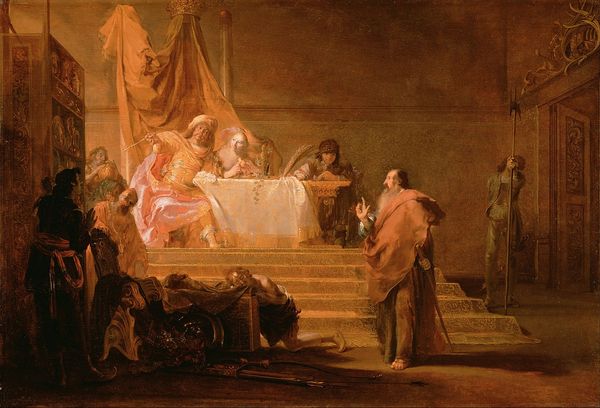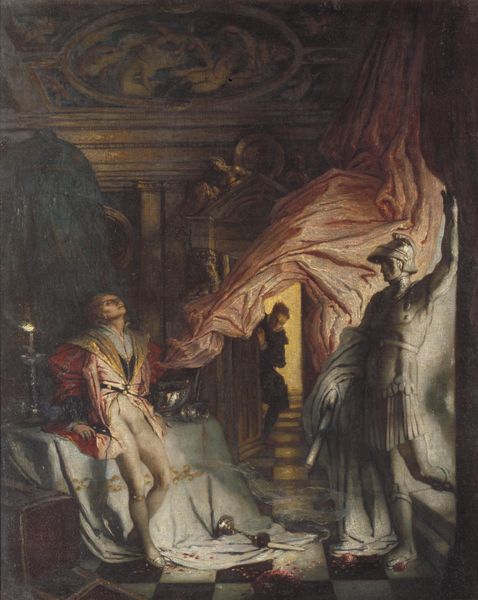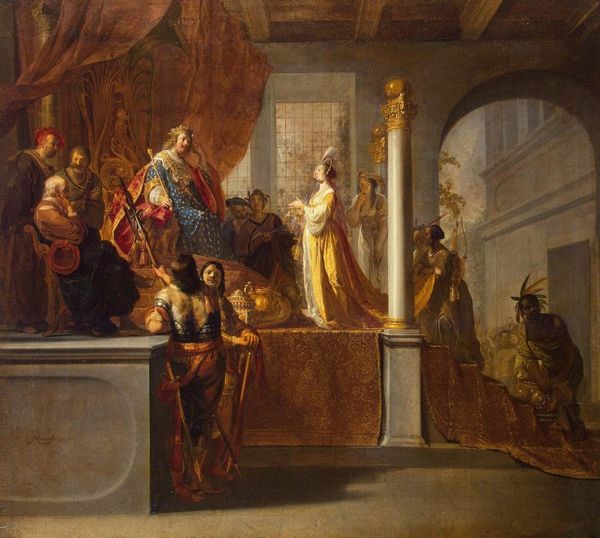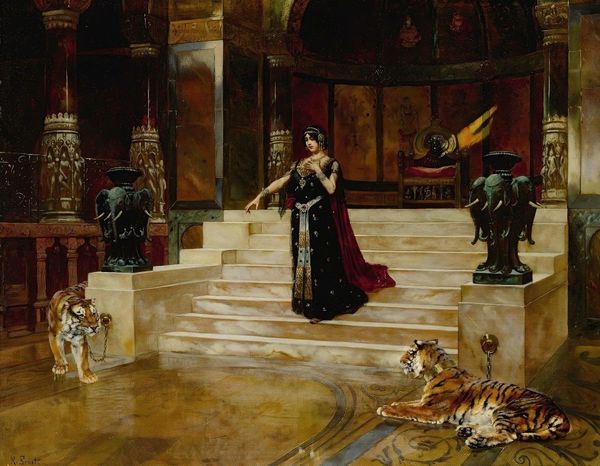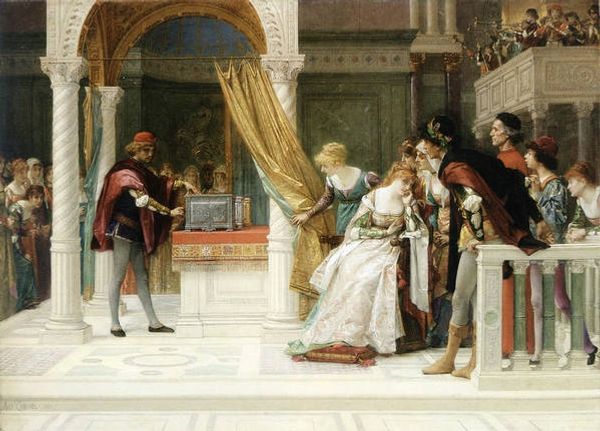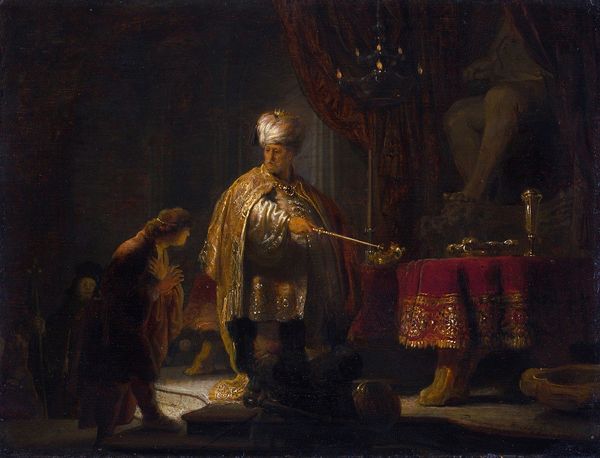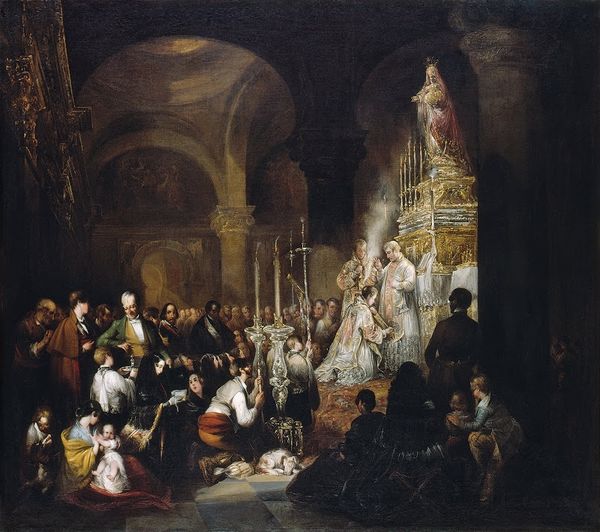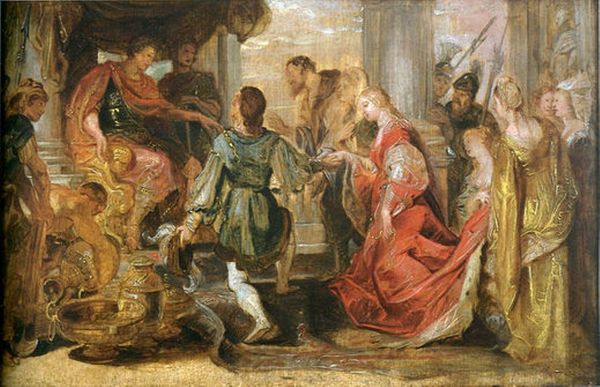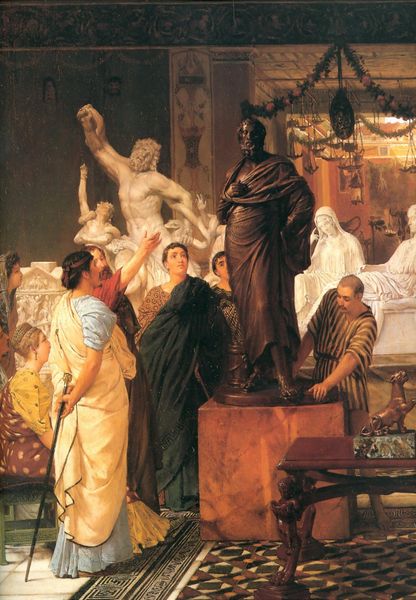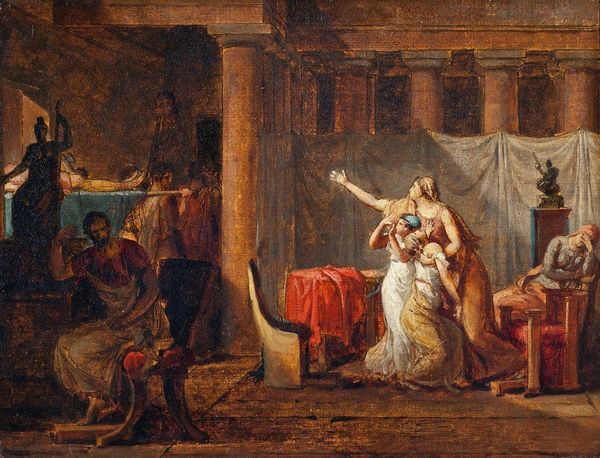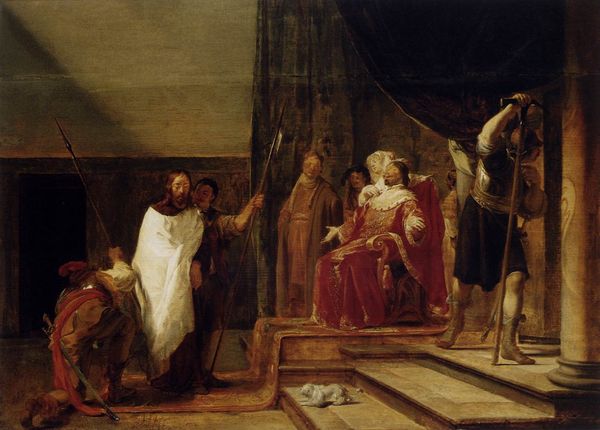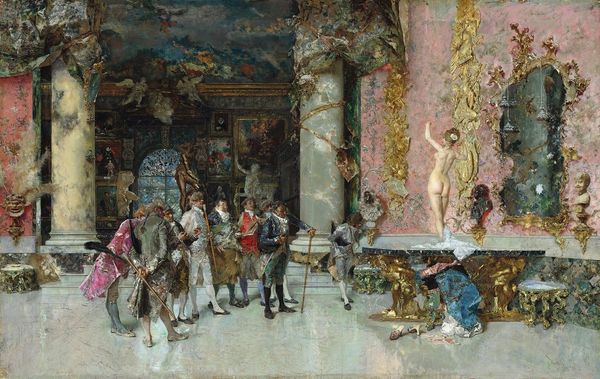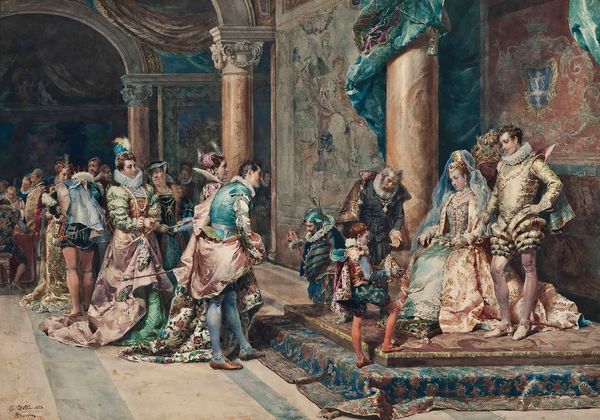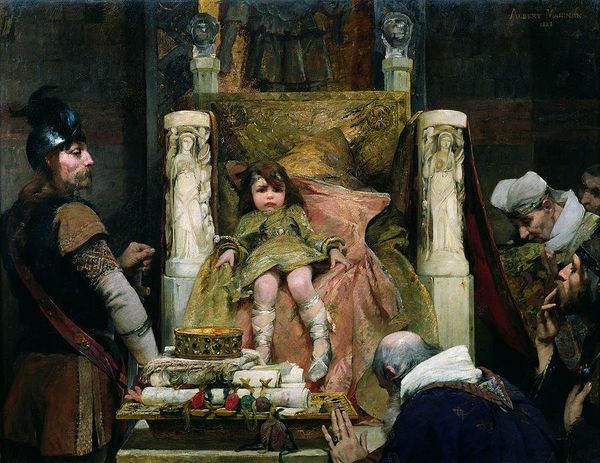
Zorobabel Devant Darius
0:00
0:00
nikolausknupfer
Musée d'art et d'histoire de Narbonne, Narbonne, France
painting, oil-paint
#
portrait
#
allegory
#
baroque
#
painting
#
oil-paint
#
figuration
#
oil painting
#
history-painting
#
nude
Copyright: Public domain
Editor: This oil painting is called "Zorobabel Devant Darius," by Nikolaus Knüpfer. The dramatic lighting really emphasizes the opulence of the king’s court, but I'm not sure I understand what’s happening. How do you interpret this work? Curator: This is a fascinating example of baroque history painting, isn't it? I see a deliberate commentary on power, justice, and the dynamics between colonizer and colonized. We must acknowledge the artist's position and the potential perpetuation of Eurocentric narratives. Knüpfer, likely commissioned to depict this scene, employs a visual language that celebrates authority. Editor: So, the King's court isn't meant to be viewed neutrally? Curator: Precisely. Note the idealised, nude figure presenting a palm – possibly an allegory for truth or justice. Consider her vulnerability in contrast to the powerful King Darius. Whose story is being told here, and how is it being framed? Could it reflect contemporary social power dynamics, with Darius as a stand-in for colonial powers and Zorobabel for a subjected population pleading for autonomy? What are your thoughts on this dynamic? Editor: It makes you think about the people left out of the story. Does the composition suggest anything about this power dynamic? Curator: Absolutely, observe the hierarchy inherent in the staging. Darius is elevated, enthroned, and surrounded by advisors, whereas Zorobabel is kneeling, placed at a lower level. This deliberate visual arrangement reinforces a system of inequality. Considering gender, too, how might we interpret the role and vulnerability of the female figure in the center? Editor: That's a really good point. I hadn't considered how the gender dynamic also plays into the power structure. This makes me think about whose perspectives we privilege when we view historical paintings. Curator: Exactly. Understanding this image means questioning the dominant narrative and uncovering the subtle ways it reinforces existing social structures. Let’s look for opportunities to invite multiple perspectives that expand and enrich historical interpretations.
Comments
No comments
Be the first to comment and join the conversation on the ultimate creative platform.
